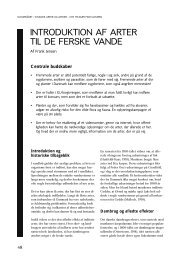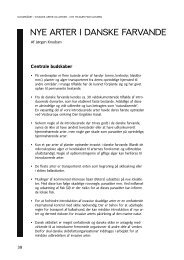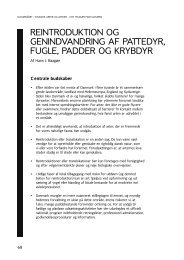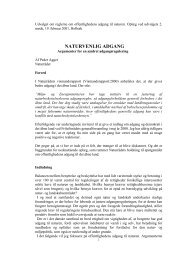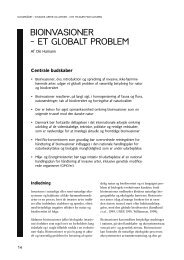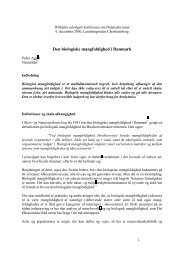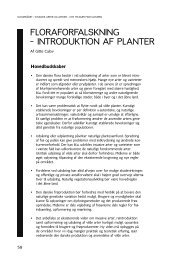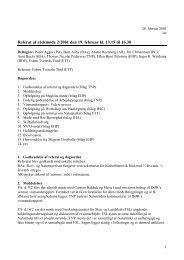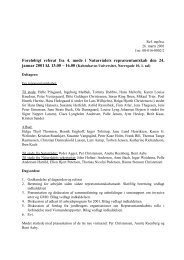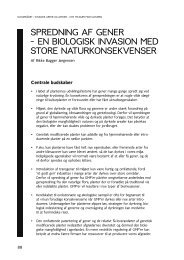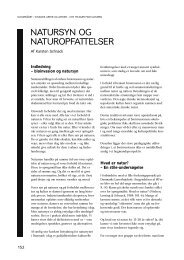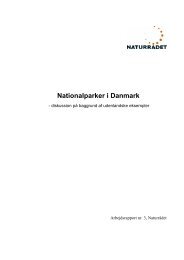Læs hele rapporten som pdf-fil. - Naturrådet
Læs hele rapporten som pdf-fil. - Naturrådet
Læs hele rapporten som pdf-fil. - Naturrådet
Create successful ePaper yourself
Turn your PDF publications into a flip-book with our unique Google optimized e-Paper software.
NATURRÅDET / TEMARAPPORT / NATUR OG LANDBRUG<br />
68<br />
| FIGURE 3 | Agriculture<br />
No longer the backbone of the rural economy, but essential for environmental quality, nature and<br />
amenity. Data source: OECD Territorial Development Service (TDS).<br />
100%<br />
75%<br />
50%<br />
25%<br />
0%<br />
Agricultural share (%) of total employment and land use<br />
Agricultural employment<br />
OECD member countries<br />
l a ges farmers have become a minority. In the<br />
European Union (EU) less than 10% of the working<br />
population are employed in the agricultural<br />
sector, producing less than 5% of the gross<br />
domestic product (GDP). In the OECD area, there<br />
are only a few regions left where the share of fa rming<br />
in total regional employment exc eeds 25%<br />
(EU Commission 1997). Thus, even in predominantly<br />
rural regions the vast majo r i ty of the population<br />
relies today on other, non-agricultural activities.<br />
This has undoubtedly implications also fo r<br />
the public perception of rural development priorities<br />
and landscape amenities (Figure 3).<br />
Agricultural land use<br />
While agricultural contribution to the rural economy<br />
is declining in most OECD countries, agriculture<br />
- together with forestry - is still using<br />
more than 75% of the total land area. This re-<br />
Agricultural land use<br />
v ea l s the important role of agriculture in shaping<br />
the rural environment, managing the countryside<br />
and protecting its natural resources. This<br />
task is becoming even more relevant today than<br />
in former times, since general economic grow t h<br />
and structural changes have led to a disproportionate<br />
increase in pollution and environmental<br />
degradation on one hand, and to a grow i n g<br />
demand for various kinds of rural amenities on the<br />
other. In many areas, however, present agricultural<br />
patterns and practices cannot be considered<br />
e nvironmentally sound. While agriculture has<br />
b een extremely successful in ful<strong>fil</strong>ling its primary<br />
task, production of feed and food, other<br />
social and environmental functions have often<br />
b een ignored. Success has had a high cost, and in<br />
particular the environmental losses caused by<br />
recent agricultural structural changes and unsustainable<br />
farming practices are significant.



